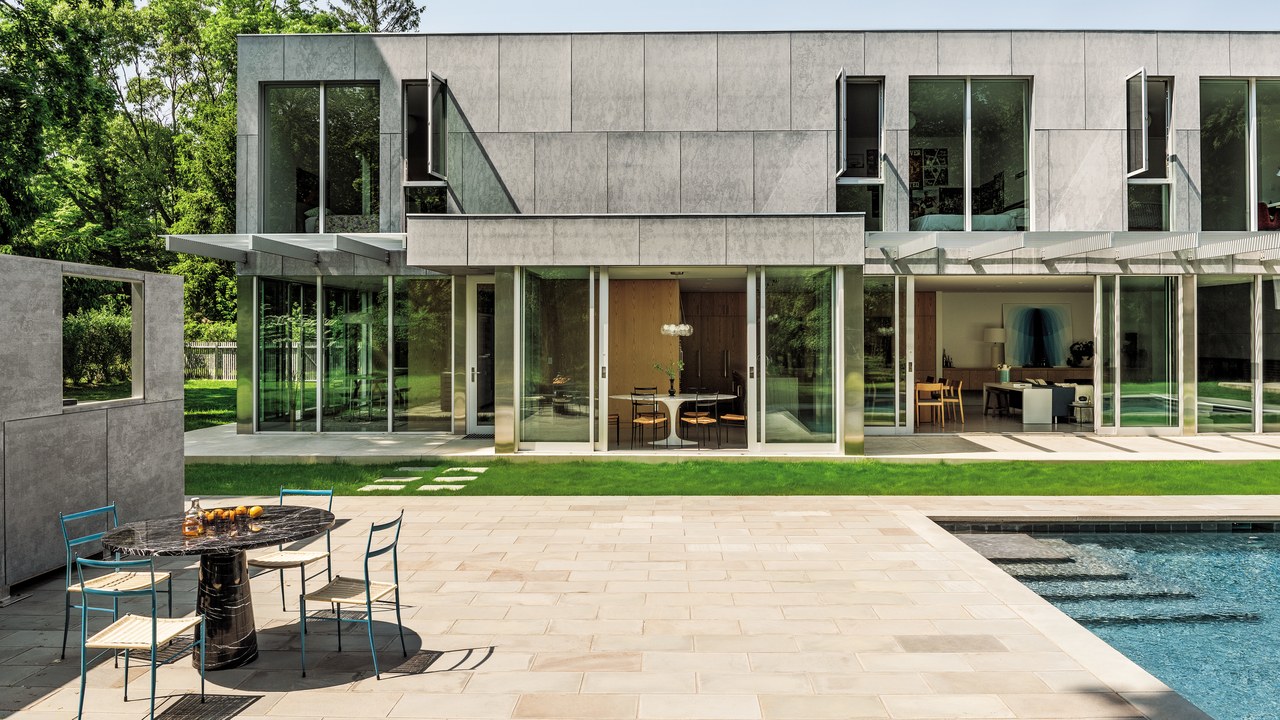1. Don't Try So Hard
"Most people try to accomplish too much in their homes," advises David Mann. "They try to be this and this and this, and when they're done, it doesn't function in any of the ways they envisioned. What are the most important goals? Choose a few and accomplish them." Mann had worked with Indiana-native and art collector Rodney Miller on two prior projects when they were given the opportunity to build from the ground up on a 25-foot-wide vacant lot in Carnegie Hill. "Miller is very tall, and one frustration he had with many apartments is they felt claustrophobic." He wanted a place that wouldn't make him, his art collection, or his friends—who he liked to have over for drinks and dinner—feel cramped
So Mann imported space, by way of light. The glass curtain wall at the back of the house lets the sun flow in and the interior lighting flow out, where it brightens up the backyard at night. Mann dropped blue stone throughout the entire place—from the front courtyard, through the first floor, and through the outside—so that it feels like one continuous space. The dark-toned flooring and wood accents, paired with damn-that's-white walls, put the focus on the hanging art. All Miller's missing is a quiet suited man in the corner reminding guests not to use flash photography.
2. Play Nice with Mother Nature
The most minimalist house possible would be a shipping container painted white with one lone mid-century modern chair in the corner, but nobody wants that. No, even if you want minimal, you still want some of the messiness that is the outdoors meshing with your design. The key, then, is to be intentional about how that happens.
The template for this 2,400-square-foot weekend home in upstate New York were drawings and renderings of a desert home Mann had designed for himself. Mann wanted to orient the house to face the western sunset, toward the Catskills, but his client, Sara Rotman of MODCo Creative Inc, argued that it would involve cutting down too many trees and it would be just as nice to wake up to the sunrise towards the Berkshire view. "The lesson here," says Mann, "is to trust your instincts. Don't just listen to someone else."
3. ...And Make the Yard Minimalist, Too
Look at that pool. That glowing green grass. Those clean lines and startling edges. That's how minimalism goes out into the yard.
The outside of this house is clad in Cembonit, a kind of dyed stain-proof synthetic wood, and that flat textured expanse mirrors the clean walls inside. For good reason: "The exterior here becomes a room, embraced on three sides" says Mann. "The family spends a great deal of time outside together." You won't find much littering the lawn—no fire pits or tchotchkes, no botanic garden landscaping—save a freestanding screen hides an outdoor shower and barbecue. (The screen has a little window so the grill master can see what's happening and tell anyone who wants a burger well-done to kick rocks.) The lesson here is that you can—and should—bring the interior design you love out into all that green space. Maximize your patio, buy pool furniture you love, invest in a better grill.
4. Save Your Soul
So you're not building your dream Zen zone from scratch, but working with the house you've been given. Attaining minimalist nirvana means you'll want to do some surgery—but don't go so minimal that you lose what made the space special in the first place.
For the gut renovation of the 4,000-square-foot bachelor pad of Yoon Kim, Mann preserved the industrial loft's existing architecture, including its massive rolling steel doors, vaulted ceilings, arched top windows, and exposed brick walls. "You have to know what not to take away," said Mann. "Know what's good in the space and what to leave."
source: GQ.COM



